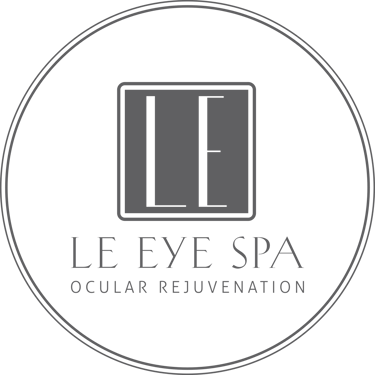Exploring Advanced Treatments for Dry Eye Beyond Eye Drops
8/7/20252 min read


Understanding Dry Eye Disease
Dry eye disease is a common yet often debilitating condition that can significantly impact an individual's quality of life. It occurs when the eyes do not produce enough tears, or when the tears evaporate too quickly, leading to discomfort and potential damage to the ocular surface. While many people rely on over-the-counter eye drops for relief, there are advanced treatments available for those suffering from persistent symptoms.
IPL and Radiofrequency Treatments
Among the advanced treatments gaining popularity are Intense Pulsed Light (IPL) therapy and radiofrequency treatments. IPL is a non-invasive procedure that uses light energy to reduce inflammation and promote the health of meibomian glands, which are essential for tear production. By improving the quality and quantity of the tears, IPL can provide long-term relief for dry eye patients.
Radiofrequency treatments, on the other hand, utilize thermal energy to stimulate collagen production and improve eyelid function. These procedures can enhance meibomian gland efficiency and provide much-needed moisture retention within the eyes. Both IPL and radiofrequency therapies are typically performed in a clinical setting and have been shown to yield positive outcomes, making them worthy considerations for patients seeking relief beyond conventional eye drops.
Routine Lid and Lash Exfoliation
Another essential aspect of managing dry eye is the routine exfoliation of the eyelids and lashes. Practicing proper eyelid hygiene through regular cleaning can remove debris, bacteria, and excess oils from the eyelid margins. This process helps to maintain open and functioning meibomian glands, thereby enhancing the eye's natural ability to produce tears.
In office exfoliation methods can include the use of an oscillating tool or manual debridement with special gels to cleanse and clear the eyelid margin of harmful bacteria, Demodex mites, dead skin, oils and makeup. Patients can maintain and prolong their in office results with home care doing things like warm compresses or using gentle cleansing pads or gels specifically designed for eyelid care. Regular incorporation of these practices into one’s eye care routine can be a pivotal step in alleviating dry eye symptoms. Patients are encouraged to consult with their eye care professionals regarding suitable techniques tailored to their individual condition.
Conclusion
In conclusion, while eye drops have long been the go-to solution for dry eyes, it is essential to recognize that advanced treatments such as IPL, radiofrequency therapies, and routine lid and lash exfoliations offer promising alternatives for those seeking relief. As research continues to evolve, it is crucial for patients to explore these options in consultation with their eye care practitioners to determine a comprehensive approach tailored to their particular needs. By embracing these advanced treatments, individuals struggling with dry eye can significantly improve their ocular comfort and overall well-being.
Follow us
Subscribe to our newsletter
Hours
Appointment Only | Monday - Friday
Contact
9260 West Sunset Rd Ste 209, Las Vegas, NV 89148
Text or call: (702) 518-2711* | Fax: 888-830-5518
Email: info@leeyespa.com
*For fastest response times, please text or email


